Volkswagen Arteon eHybrid review: company car drivers will love this sharp-suited express
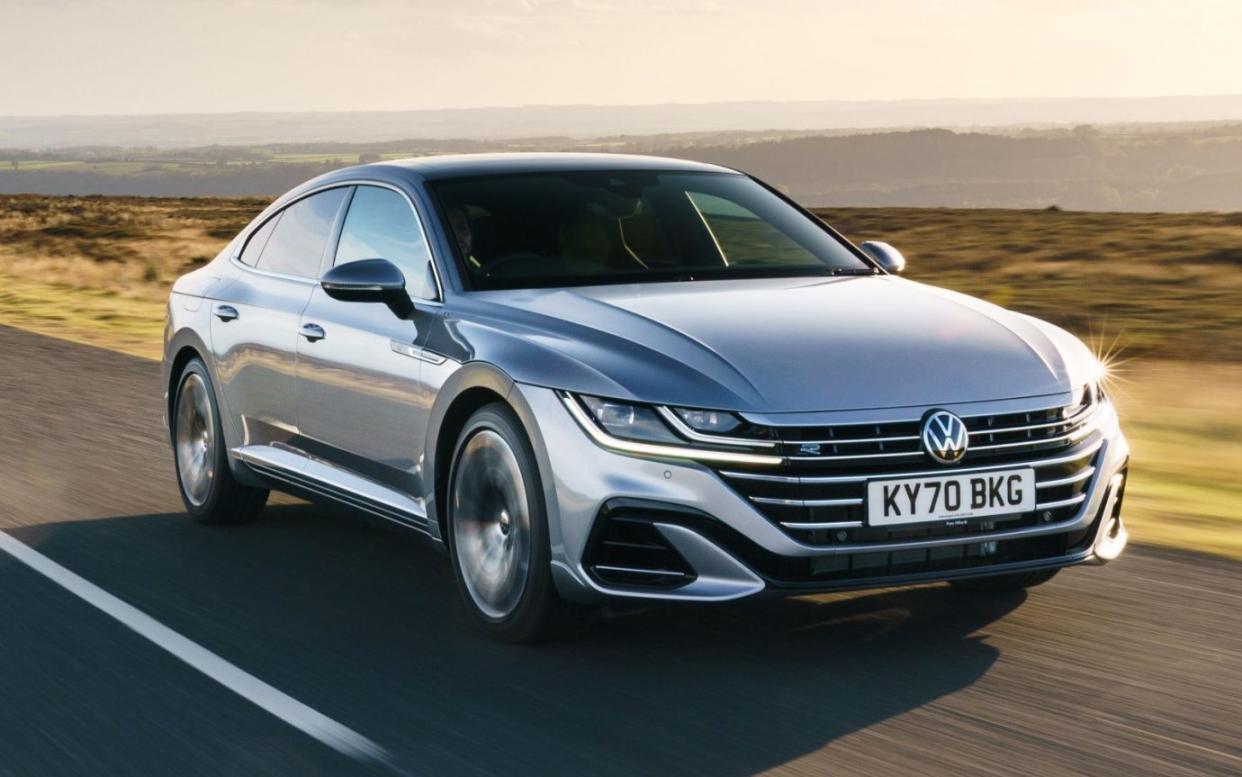
The Arteon eHybrid is brand new, but you’ve seen it before. You just haven’t realised it, because hitherto you’ve seen it in component form. Essentially, this is a marriage of the Volkswagen Arteon that’s been on our roads since 2017 with the plug-in hybrid (PHEV) running gear of the Passat GTE that’s been around since 2015.
This is the first time the two have been combined, despite the Arteon being almost all-Passat under the skin. That seems a little remiss given Volkswagen’s early start in the PHEV race and the Arteon’s obvious appeal to company car user-choosers, for whom a plug-in makes a world of sense thanks to its enormous tax advantages.
Nevertheless, the plug-in Arteon is finally here, and available either as a fastback or in new-fangled Shooting Brake (pseudo estate) form. Time to find out whether this new car – that in fact consists of two older cars melded together – was worth the wait.
Pros
Quiet, comfortable driving experience
Stylish looks
Spacious seating
Cons
Small-ish boot
Fiddly touch-sensitive controls
On the pricey side
Under the skin
It isn’t just the Passat GTE the Arteon now shares this plug-in drivetrain with. You’ll also find it in the Golf GTE, the Tiguan eHybrid and a smattering of Audis, as well as the new range of Skoda and Seat plug-in hybrids.
The petrol component is still Volkswagen’s familiar 1.4-litre four-cylinder petrol turbo; this is boosted by an AC electric motor fed by a 13kWh battery, all driving the front wheels through a six-speed dual-clutch automatic gearbox.
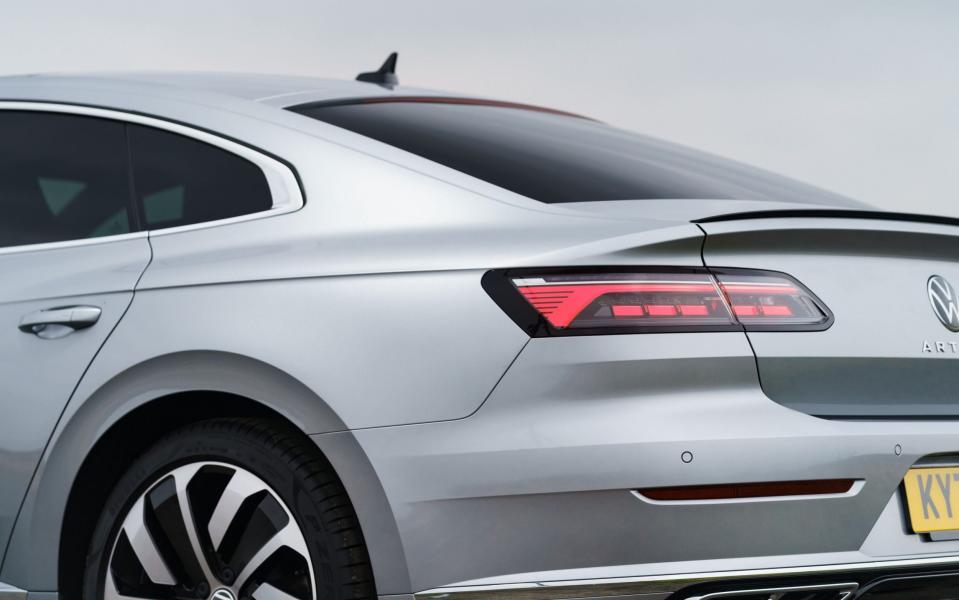
Charging it from empty to full will take five hours on mains power, or around three and a half using a wall box, and Volkswagen claims you’ll get as many as 39 miles running purely on electric power, though in the real world that’ll probably drop to somewhere between 25 and 30 miles.
In the Arteon this powertrain kicks out 215bhp, which sounds a decent amount, but of course there’s the extra heft of the battery to worry about. That brings the total weight up to a not-inconsiderable 1.8 tonnes, so performance is brisk, rather than out-and-out fast.
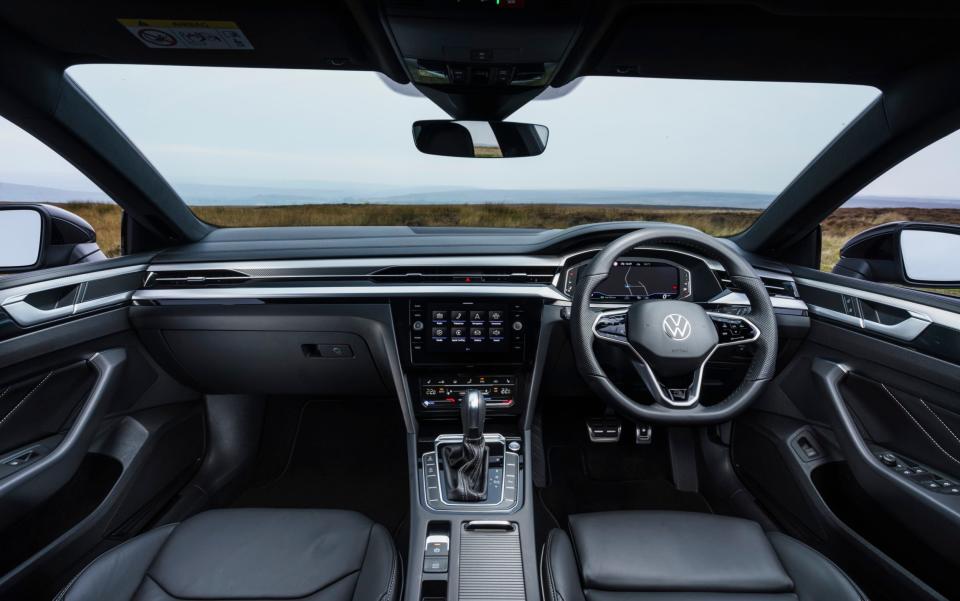
All that weight presents its own problems in terms of suspension set-up and damping control, too as we’ve already experienced when we ran a Passat GTE as a long-termer for six months. In the Arteon, however, you get adaptive suspension as standard, which should go some way toward solving that problem.
Size and space
One compromise you will have to make, however, is on boot space; the hybrid electronics eat up some of the space beneath the boot floor, so there’s less than you’ll find in the standard petrol or diesel Arteon, or in rivals like the Peugeot 508 SW Hybrid. On the plus side, the floor is high up and close to the lip, which makes loading heavier items easier, while the rear seats fold down flush with the floor, so sliding longer items in is no hassle either.
There’s much more space in the rear seats; in fact, leg room is so expansive it’s on a par with the Volkswagen Passat and Skoda Superb. Only in terms of head room does the Arteon lose out, which is rather to be expected given its rakishly low roof line.
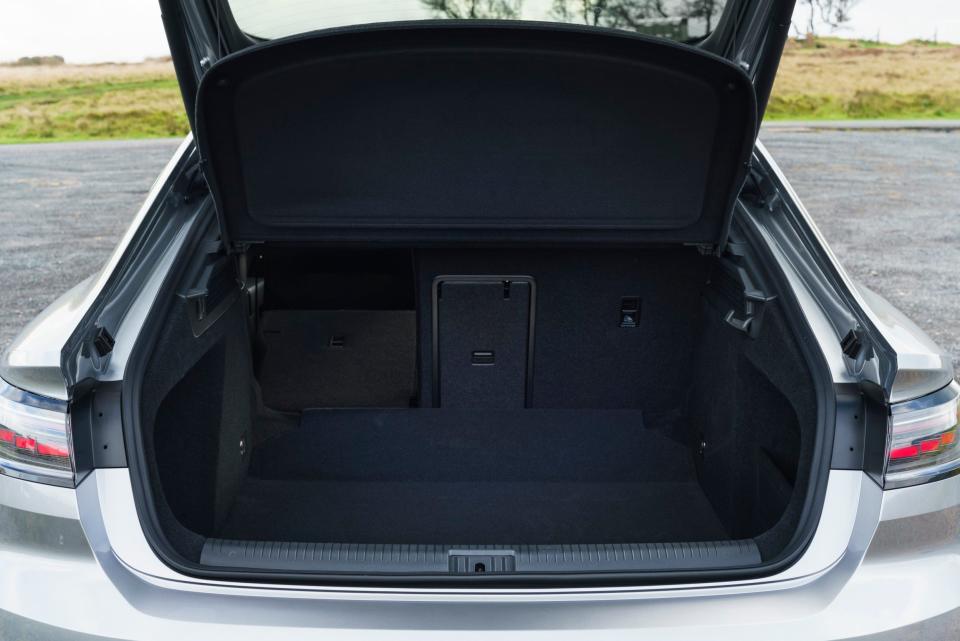
Open the frameless doors and slide into the front seats and you’re met with a dashboard that’s built from the sort of solid materials you’d expect from Volkswagen; the design leans more toward inoffensive than stylish, and the row of faux stitching that runs along the top is a little gauche, but for the most part the Arteon is a pleasant enough place to be.
We could do without the touch-sensitive climate control panel that’s been lodged in the dash of this facelift model, mind you; if you’re a regular reader, you’ll probably be aware that we often bemoan this sort of thing, and the Arteon’s cramped, fiddly panel is less easy to use than the sensible set of physical dials and buttons that came before it. Worse still are the steering wheel controls, also touch-sensitive, which feel clunky and slow to respond.
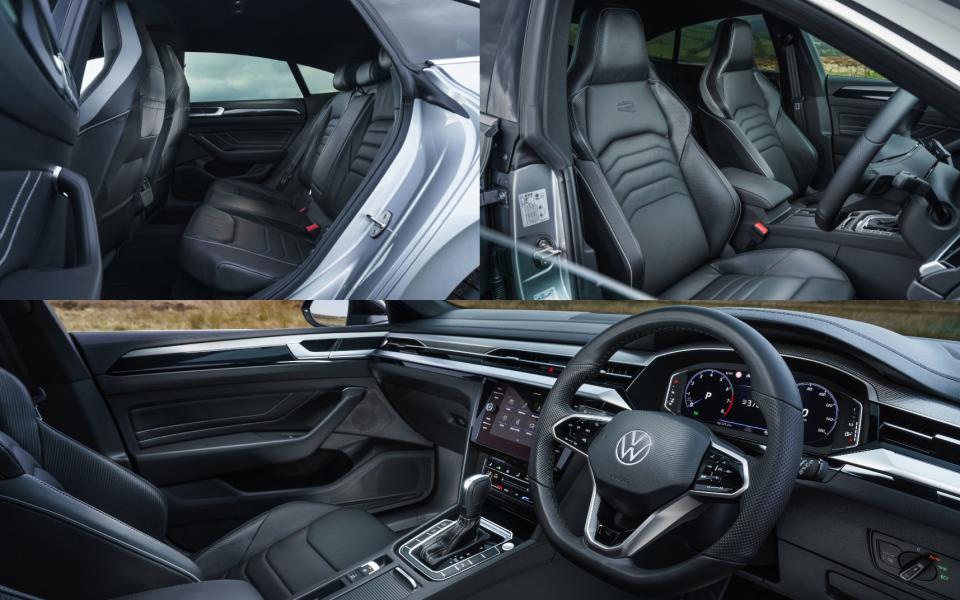
The rest of the controls are much better; the buttons around the gear shifter are big, chunky and easy to hit; the central screen is Volkswagen’s older system, which is actually swifter, smarter and more intuitive than the new one, and the virtual gauges are clear and easy to read.
Pounds and pence
Compared with the Volkswagen Passat GTE and Skoda Superb iV with which it shares its platform and running gear, the Arteon is a little pricier like-for-like.
You might argue you’re paying extra for its swankier looks, but the Peugeot 508 Hybrid, whose low roofline and frameless doors make it much closer in ethos to the Arteon, costs an almost identical price to this entry-level Elegance model. That’s in top-spec GT Premium form, too, which gets you a rather more generous complement of equipment.
This isn’t a cheap car to buy, then; indeed, it won’t cost you all that much more to find your way into a BMW 330e, which isn’t quite as well equipped, but offers a lot more power, and is predicted to hold its value much better by dint of its premium badge.

Of course, these plug-in hybrids are most commonly chosen as company cars, and in that vein the Arteon makes plenty of sense. Then again, so do all of its rivals – and given most of them have lower P11D values like-for-like, it looks like they’ll work out cheaper, too.
On the plus side, the Arteon’s electric range is one of the best on the PHEV market; what’s more, while the official consumption figures on such things have no real connection with reality, they are at least useful for comparison purposes, and suggest the Arteon should prove more frugal than either the 508 or 330e, even if it isn’t quite up there with the Superb.
On the road
Under electric power, the Arteon is lovely to waft around in. With no engine noise to speak of, wind noise very well damped and only a gentle background roar of tyres that you only really notice if you listen out for it, it’s a picture of tranquility whether you’re bimbling around town or out on the open road.
That continues to be the case when the petrol engine kicks in, too; Volkswagen must have added a fair bit of sound deadening compared with the Passat, because our test car was nowhere near as vocal as our GTE long-termer.
Indeed, when the petrol engine kicks in you barely notice it in the Arteon, and even under hard acceleration the engine noise, while not exactly sporting, is hushed enough that it isn’t intrusive.
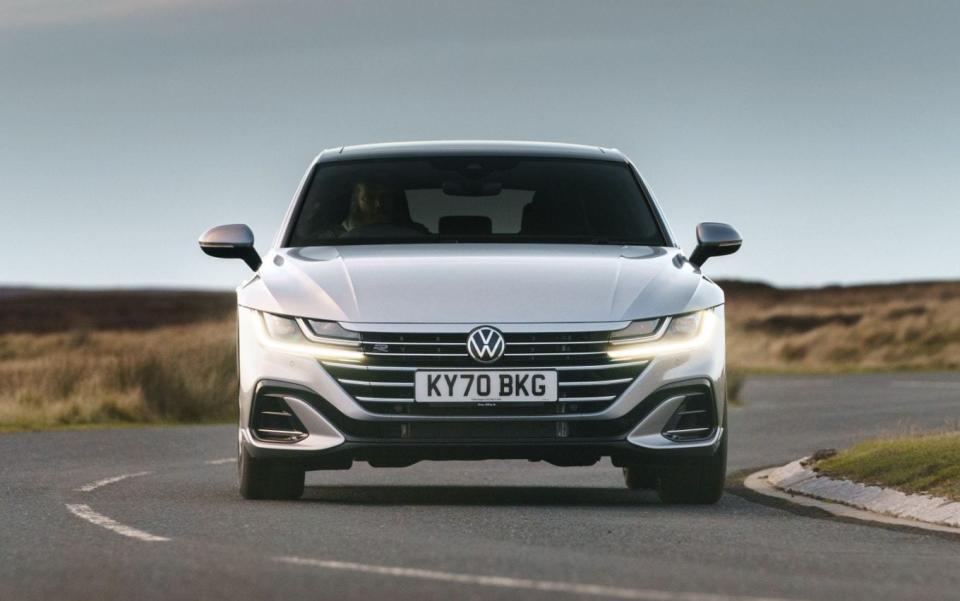
The ride is good, too; not quite as smooth as the Superb’s which uses a similar adaptive set-up, but one that’s more comfort-oriented. As a result, you do notice a few of the harsher bumps making their way through to the cockpit when the Arteon is set in ‘Normal’ mode. These are rare, though, and for the most part it offers a well-balanced blend of true bump-smothering ability and stability, without becoming overly wallowy.
Set it in ‘Sport’ mode and the suspension firms up, as you’d expect, and while it has a good go at keeping all that weight under control, it doesn’t manage to do so entirely successfully, so the Arteon still leans over a little, and when pushed really hard, tries to break away at the nose.
Having said that, the steering is well weighted and there’s even a bit of feel to give you an idea of what’s going on at the front end, while the initial turn-in is eager and responsive, all of which means unless you’re really trying to drive it like a hooligan, the Arteon is still quite good fun to hustle along.
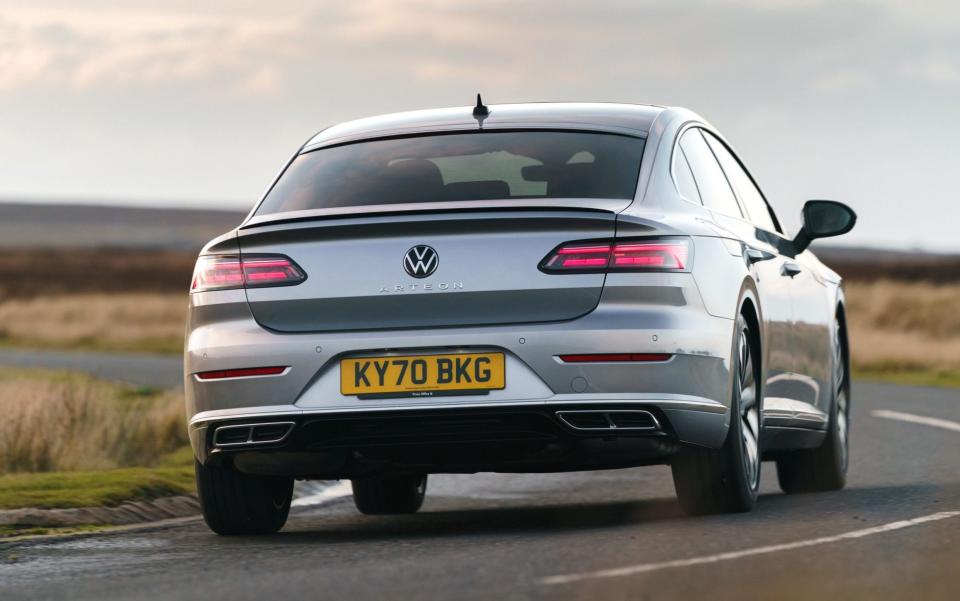
Bizarrely, given the Arteon doesn’t share the Passat’s badges, there’s also a big ‘GTE’ button, which, if you press it, causes big ‘GTE’ graphics to flash up on both screens, too.
This activates a mode in which the electric motor boosts the petrol engine throughout the throttle travel, rather than only when you hit the kickdown switch, as it does normally. But it does feel strange in a car without any GTE branding – and makes it perhaps a little too obvious that the technology has been cribbed wholesale from the Passat.
With this mode engaged, however, the Arteon feels good and muscular; not out-and-out fast, as those performance figures suggest, but brawny and flexible, which makes it extremely useful when you’re simply looking for a bit of extra shove for an overtake.
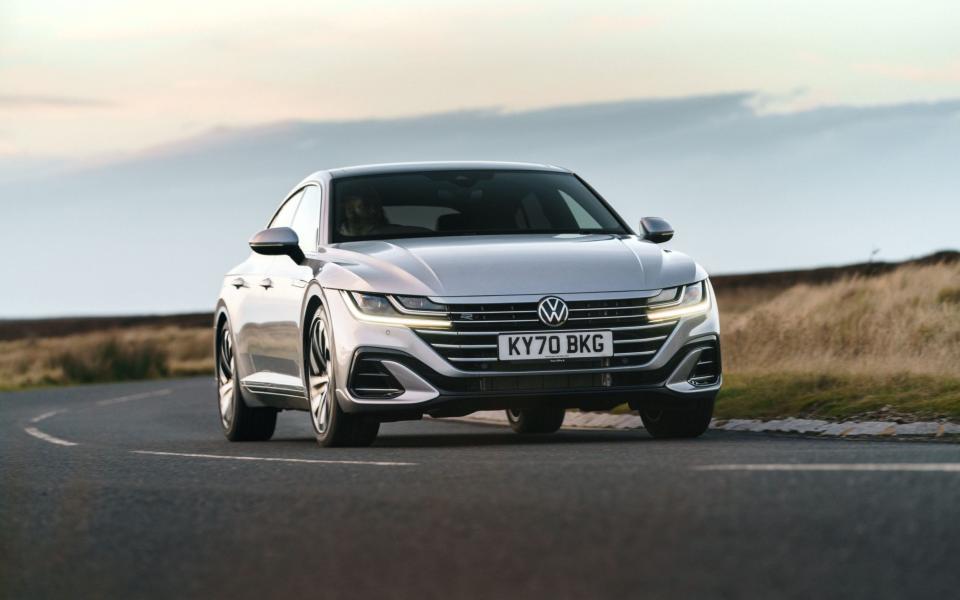
The downside is that it takes the gearbox and engine electronics a second or two to work out what they want to do when you really floor the accelerator pedal, which is no real surprise given the complexity of the powertrain – though to be fair, this tends to be an issue with most plug-in hybrids.
The Telegraph verdict
It isn’t flawless, then, but on balance this Arteon eHybrid is a solid effort. Perhaps a little on the expensive side, but not so much so that you couldn’t justify it to yourself if you were in the market for a PHEV and really liked its styling, especially given it’s more polished than a Passat and more stylish than a Superb.
It certainly delivers the sort of suave, relaxed driving experience those looks promise. And it does so while also being entertaining enough in corners to be interesting. Inside it’s classy enough, if a little dour, and its usability niggles are balanced out by a surprising amount of space.
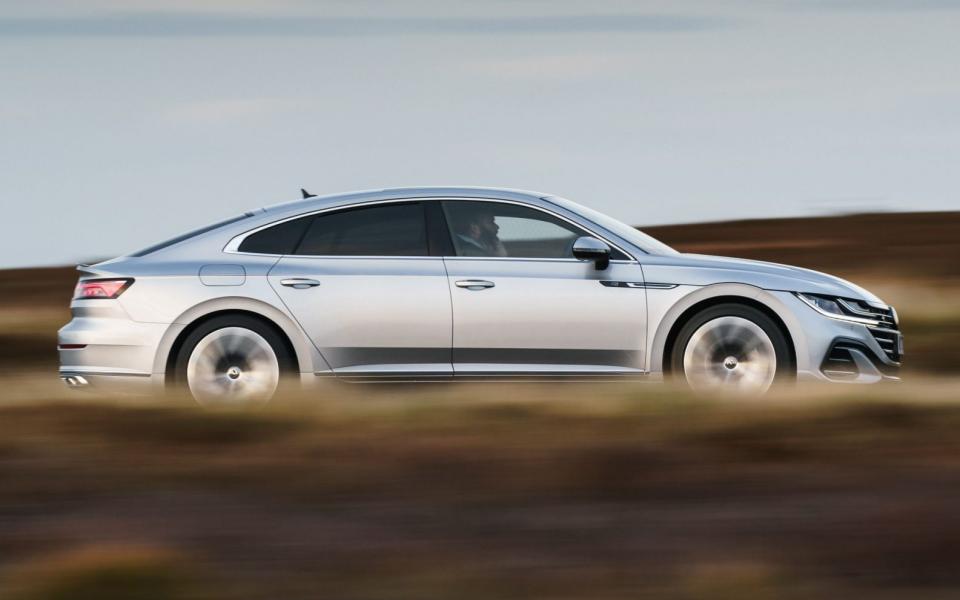
In short, it’ll make a fine addition to the company car park. And, one that, slightly unexpectedly, manages to be greater than the sum of its parts.
The facts
On test: Volkswagen Arteon 1.4 TSI eHybrid Elegance
How much? £40,510 on the road
How fast? 138mph, 0-62mph in 7.8sec
How economical? 245.8mpg (WLTP Combined)
The oily bits: 1,398cc four-cylinder petrol engine, 215bhp (total system maximum output), six-speed dual-clutch automatic gearbox, front-wheel drive
The electric bits: AC motor with 13kWh battery, 3.6kW on-board charger, Type 2 charging socket
Electric range: 39 miles (WLTP Combined)
CO2 emissions: 26g/km (WLTP Combined)
VED: £0 first year, £480 next five years, then £145
Warranty: 3 years / 60,000 miles (unlimited mileage in first two years)
Boot size: 455 litres
Spare wheel as standard: No (not available)
The rivals
Skoda Superb 1.4 TSi iV SE L
215bhp, 254.2mpg, £37,075 on the road
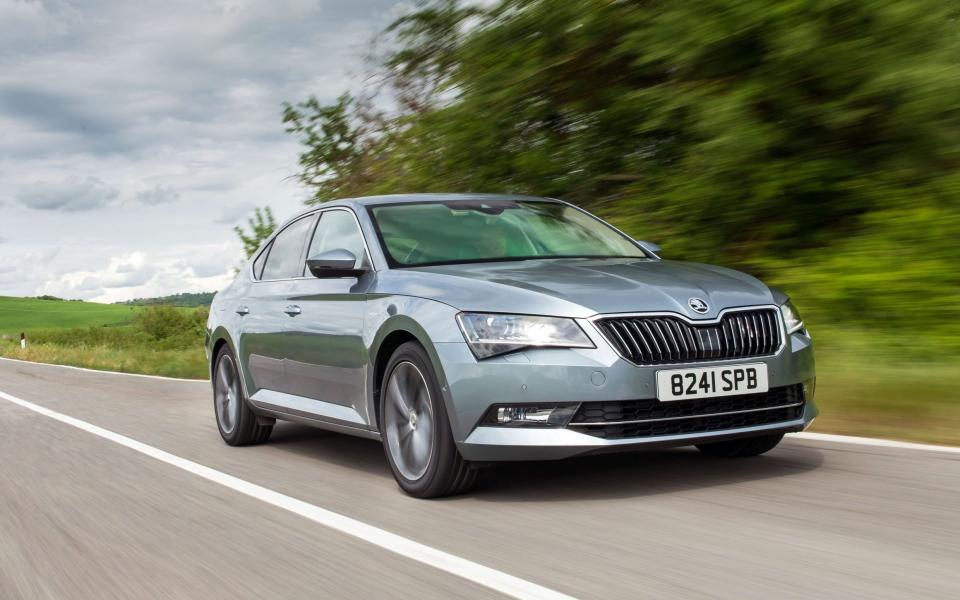
Arguably a more sensible choice than the Arteon, the Superb in this specification offers a similar level of equipment, along with even more room. It isn’t quite as stylish, of course, but if function matters more to you than form, it’s a better – and cheaper – option.
Peugeot 508 Hybrid 225 GT Premium
222bhp, 235.4mpg, £40,910 on the road
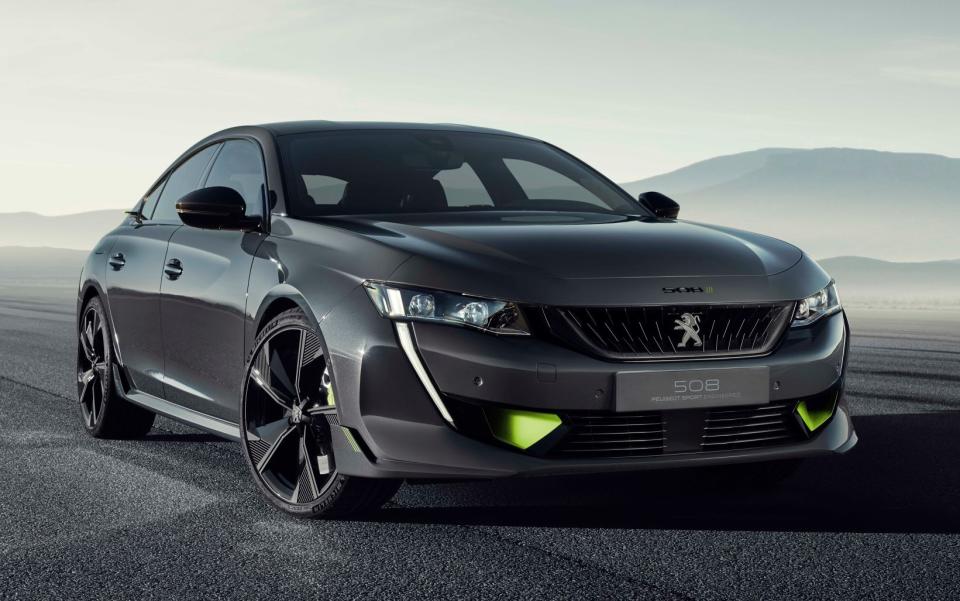
£400 more than the Arteon gets you this 508, which is loaded with equipment, arguably every bit as rakish on the outside, and even more so on the inside. It doesn’t feel quite as slick to drive, and the ride and handling aren’t quite so well resolved, while it looks likely to depreciate even more heavily.
BMW 330e SE Pro
288bhp, 217.8mpg, £40,030 on the road
The 330e is even better to drive than the Arteon, and can boast an even more upmarket interior and a much more powerful engine, not to mention much better predicted resale values. The downside is that while the cost is roughly the same (in fact, slightly less), this is an entry-level 3-Series so its standard equipment is relatively sparse in comparison.
For new and used buying guides, tips and expert advice, visit our Advice section, or sign up to our newsletter here
To talk all things motoring with the Telegraph Cars team join the Telegraph Motoring Club Facebook group here

